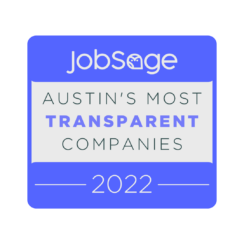As artificial intelligence becomes more and more ubiquitous, so too are terms such as accountable, responsible and ethical. Responsible AI as a business practice is quickly transforming from a “nice-to-have” to a “must-have.” New regulations in the US and abroad are being established every day, further driving the need to stay up-to-date on Responsible AI procedures. Whether you’re working on a cutting-edge AI solution or simply optimizing existing systems, implementing a comprehensive Responsible AI toolset is essential for mitigating risks, ensuring fairness, and adhering to evolving privacy and security standards. In this post, we’ll explore what an RAI toolset looks like, how it can be applied in real-world scenarios, and how businesses can navigate the challenges of balancing innovation with responsibility.
What is an RAI Toolset?
A Responsible AI toolset is a collection of methodologies, frameworks, and technical tools designed to help organizations develop and deploy AI systems in a transparent and accountable manner that upholds privacy and security standards. One way to view an RAI toolset is in accordance with the life cycle of your project or product. As with any project or product, a foundation of Strategy and Planning is critical; this means resource allocation, investment, prioritization and messaging all must include Responsible AI practices and ideology.
Then, in the Design, Development and Deployment phase, the practical work of implementing Responsible AI procedures begins. Some such procedures can include analytical techniques to measure and eliminate bias, as well as strategic techniques such as an impact assessment that can identify how an ecosystem is affected by the AI system
Just as in a project or product, measuring success is the crucial final step in your Responsible AI toolset. Rather than a “one-and-done” approach, ongoing Monitoring, Reporting and Governance ensures Responsible AI practices are never stagnant, constantly adapting to identify emerging risks and stay on top of RAI, privacy, and security regulation changes.
Of course, all of the guidelines and procedures above are built upon the foundation of your organization’s unique ethics and values. Applying your company’s values to how you approach AI-based solutions is critical for maintaining consistency, creating clarity, and setting expectations.
RAI Toolset in Action: A Case Study
At Valkyrie, we have a dedicated Responsible AI team (RAI) that creates and implements a framework for responsible AI practices in the work we do for our clients. Even for projects not specifically involving sensitive data or high-risk outcomes, responsibility and accountability are always taken into consideration throughout the project life cycle. We have a framework of procedures specific to Valkyrie that we follow in each project to ensure we are giving proper consideration to all ethical factors and mitigating potential negative outcomes.
A client example showcasing Valkyrie’s process and approach is our work with an emergency services transport agency that dispatches response vehicles (ambulances). They came to us with a simple optimization problem: with tons of vehicles being dispatched at unpredictable times and to unpredictable locations, they needed a way to help forecast where and when emergency services may be needed for better resource allocation.
As with any project Valkyrie takes on, we complete an impact assessment, which examines all potential outcomes and groups or individuals that may be affected to determine risk areas. In this case, the potential risks were grave— inaccurate forecasting could lead to inadequate staffing for emergencies, staff burnout, poor customer service or care, resource shortages, and unnecessary operating costs.
With all of these potential negative outcomes that would affect the company and the public in mind, the team developed systems for mitigating the risks. In the modeling phase, our team took steps such as historical data de-trending, noise flagging, quantile regression, and Shapley value application.
The results speak for themselves, as our procedures led to more consistent model performance and enhanced accuracy with fewer errors, all of which helped the client improve resource and staffing utilization to provide emergency response services to people in need.
Key Takeaways for Building Your RAI Toolset
- Combine the Technical and the Contextual: It’s easy to get lost when trying to find the right tool for the right job. RAI techniques depend as much on the problem you’re trying to solve & the environment in which you’re solving it as they do on the technical approaches you design.
- Bring Structure to the AI Solution Lifecycle: There is a tendency to focus solely on deployment, and rapid deployment at that. However, just as much risk resides in the ongoing management and monitoring of AI solutions as those in the initial concept and launch phases of an AI solution.
- Integrate Ethical Models with Business Objectives: It is far more effective to leverage company ethics and values in the design and deployment of AI solutions than to force new Responsible AI concepts into your narrative. Customers and business partners want to understand how your solutions will protect them and their interests – not which industry framework you choose to assign.
- Assess Risk Based on a Complete Workflow (Not Solely on Outcomes): AI solutions can be incredibly opaque to an outside observer, which results in many discussions being limited to the outcomes of a model or AI solution. This only provides a partial view, though; when assessing an AI solution, you must consider the foundational data used to train the model, the source and integrity of that data, and even the notice/consent attached to that data before you can even consider risks from predictive outcomes.
- Layer in Multiple Perspectives: It’s natural to focus on potential harm for intended users of an AI solution, but this is just the beginning. You must also consider the potential impacts to those who do not use or interact with your AI solutions, as well as considering differences between impacts to individuals and impacts to broader groups and communities. Only then can you develop a comprehensive view of potential risk for mitigation.
- Continually Challenge Underlying Assumptions: Ethics and privacy in AI solutions, like other types of solutions, change over time and across geographic and cultural boundaries. Whether due to the expansion of your AI solutions or simply the passage of time, it’s critical to challenge your original assumptions and preconceived notions about what is fair and responsible, as the assumptions of your user base and business partners can change just as quickly.
Building a Responsible AI toolset isn’t a one-time effort—it’s an ongoing commitment to ethical practices throughout the lifecycle of any AI project. By integrating ethical models, considering the full scope of potential risks, and continuously monitoring and adjusting, companies can create AI solutions that not only meet regulatory requirements but also align with their values and broader societal expectations. As the need for responsible AI continues to grow, adopting a structured, thoughtful approach will be key to staying ahead of risks and ensuring that AI serves everyone fairly.
We invite you to watch our full webinar on this topic (HERE) to dive deeper into how responsible AI frameworks can be implemented in your own work. For more information, please email info@valkyrie.ai.




